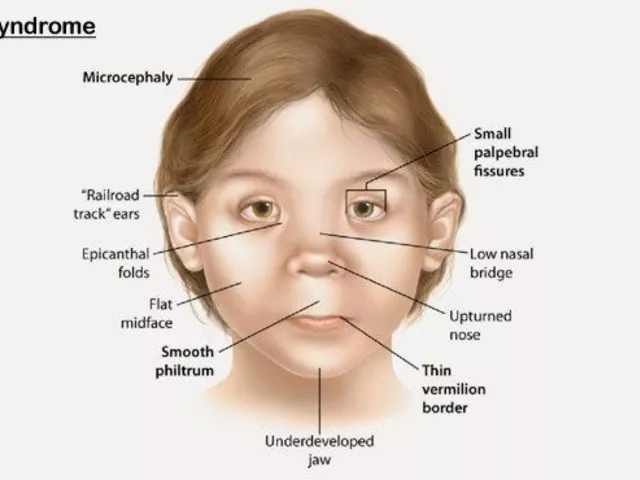Ethambutol's Role and NGO Impact in Tuberculosis Control

Tuberculosis remains a significant global health challenge, affecting millions of people every year. One of the critical medications in the fight against this disease is Ethambutol. This article will delve into its function, its importance in tuberculosis treatment, and how non-governmental organizations (NGOs) have been pivotal in controlling TB on a worldwide scale.
We'll discuss how Ethambutol works within the body to combat the tuberculosis bacterium and why it is an essential part of multi-drug therapy. Additionally, the article will highlight the contributions of NGOs in spreading awareness, providing medical access, and supporting affected communities. Real-life success stories will illustrate the impact of these organizations, and we'll also explore the future challenges and opportunities in tuberculosis control. Through understanding these facets, we gain insight into the combined medical and societal efforts required to tackle this persistent disease.
- Understanding Ethambutol
- Importance in Tuberculosis Treatment
- Global Tuberculosis Scenario
- NGO Contributions
- Success Stories and Case Studies
- Future Challenges and Opportunities
Understanding Ethambutol
Ethambutol is a powerful drug that plays an essential role in the treatment of tuberculosis (TB). Approved for medical use in the 1960s, it has become a cornerstone in the battle against this infectious disease. Ethambutol works by inhibiting the synthesis of the bacterial cell wall, making it difficult for the tuberculosis bacteria to multiply and spread within the body. This action is crucial for effective treatment, especially given that TB is known for its resistance to many antibiotics.
One of the remarkable aspects of Ethambutol is its specificity. It targets the enzyme arabinosyl transferase, which is responsible for cell wall biosynthesis in mycobacteria. By interfering with this enzyme, Ethambutol prevents the bacteria from forming a key component of their cell wall called arabinogalactan. This disruption weakens the bacteria and makes them more susceptible to other antibiotics used in multi-drug therapy. The use of Ethambutol alongside other drugs helps prevent the development of resistant TB strains, which is a critical issue in global health.
Ethambutol is usually administered orally in tablet form, and its dosage varies based on the patient's weight and the severity of the infection. For adults, the typical daily dosage ranges from 15 to 25 mg per kilogram of body weight. The drug is often taken once a day and should be consumed with food to reduce gastrointestinal discomfort. Because effective TB treatment requires a combination of drugs, Ethambutol is rarely used alone. Instead, it is part of a regimen that typically includes rifampicin, isoniazid, and pyrazinamide. This combination therapy is crucial for ensuring comprehensive treatment and reducing the risk of drug resistance.
Despite its efficacy, Ethambutol has some side effects that patients and healthcare providers need to monitor. One of the most significant concerns is its potential impact on vision. Ethambutol can cause optic neuritis, an inflammation of the optic nerve that may lead to visual disturbances or even vision loss if left untreated. This side effect is dose-dependent and more common with prolonged use. Patients taking Ethambutol are advised to have regular eye exams, and any signs of vision changes should be promptly reported to a healthcare professional. Other side effects include gastrointestinal upset, headache, and dizziness, but these are generally mild and manageable.
The discovery of Ethambutol marked a significant advancement in TB treatment. In an era when antibiotic resistance continues to pose challenges, having effective drugs like Ethambutol is vital. Dr. Herbert Dick, one of the co-discoverers of Ethambutol, once stated, "Its ability to halt the growth of mycobacteria gave hope to millions of people battling tuberculosis and transformed the landscape of infectious disease treatment." The lasting impact of Ethambutol underscores the importance of continuous research and development in the field of infectious diseases.
In summary, Ethambutol is a key player in the fight against tuberculosis. Its unique mechanism of disrupting bacterial cell wall synthesis, its role in multi-drug TB therapy, and its ability to slow the progression of the disease make it invaluable. While side effects do exist, proper management and monitoring can mitigate these risks. The success of Ethambutol in TB treatment highlights the ongoing need for effective medical solutions and the collaborative efforts required to tackle infectious diseases globally.
Importance in Tuberculosis Treatment
Ethambutol plays a crucial role in the treatment of tuberculosis, making it an indispensable part of the multi-drug regimen recommended by healthcare professionals. Tuberculosis, caused by Mycobacterium tuberculosis, is a persistent and hard-to-treat infection. This is primarily because the bacterium can develop resistance to different drugs if not treated with a combination of medications. Ethambutol is particularly valuable because it acts by targeting the bacteria's cell wall, inhibiting the synthesis of one of its critical components, and thereby preventing the bacteria from multiplying.
In a typical tuberculosis treatment plan, Ethambutol is given alongside other drugs like isoniazid, rifampicin, and pyrazinamide. This multi-drug approach helps to attack the bacteria on several fronts, significantly reducing the risk of developing drug-resistant strains. For patients, this means a lower chance of treatment failure and a greater likelihood of recovery. Ethambutol's role becomes even more critical when dealing with cases of multidrug-resistant tuberculosis (MDR-TB), where the bacteria are resistant to at least isoniazid and rifampicin—the two most potent TB drugs. In such scenarios, Ethambutol, combined with other second-line drugs, offers a fighting chance against the disease.
Patient Tolerance and Side Effects
One of the advantages of Ethambutol is its relatively favorable side effect profile compared to other anti-TB drugs. Most patients tolerate Ethambutol well, and it is less likely to cause severe liver damage, which is a common concern with some other medications used in TB treatment. However, like all medications, it is not without potential side effects. Optic neuritis, a condition affecting the eyes, is the most notable side effect associated with Ethambutol. It can lead to changes in vision, including blurred vision and color blindness, particularly with prolonged use or higher doses. Therefore, regular eye examinations are recommended for patients receiving Ethambutol, to detect any issues early and adjust treatment as necessary.
"Ethambutol's role in the treatment of drug-resistant tuberculosis cannot be overstated. It offers a vital alternative when first-line treatments fail, giving patients another hope when faced with this relentless disease." — Dr. Alicia Gonzalez, Infectious Disease Specialist
Given its importance, Ethambutol is included in the World Health Organization's (WHO) list of essential medicines. This indicates its significance in global health, particularly in areas with high tuberculosis prevalence. The WHO guidelines recommend using Ethambutol in the initial intensive phase of tuberculosis treatment, where it works alongside other medications to rapidly decrease the bacterial load in patients, thus curbing the spread of the disease and reducing the risk of transmission to others.
Accessibility and Cost
Another key aspect of Ethambutol’s importance in tuberculosis treatment is its accessibility and affordability. In many developing countries, where tuberculosis is most prevalent, the cost of medication can be a significant barrier to effective treatment. Ethambutol, thankfully, is relatively inexpensive and widely available, making it a feasible option for national TB programs that often operate under tight budgets. Ensuring continuous supply and affordability of drugs like Ethambutol is essential in the fight against tuberculosis, particularly in resource-limited settings.
In conclusion, Ethambutol is a cornerstone in the treatment of tuberculosis. Its role in preventing the development of drug resistance, its relatively mild side effect profile, and its accessibility make it an invaluable tool in combating one of the world’s most persistent infectious diseases. As we continue to strive for better treatment outcomes and the eventual eradication of tuberculosis, the importance of Ethambutol and similar drugs will remain at the forefront of medical and public health efforts.
Global Tuberculosis Scenario
Tuberculosis (TB) continues to be one of the deadliest infectious diseases globally, claiming millions of lives each year. The World Health Organization (WHO) estimates that there were around 10 million new TB cases worldwide in 2023 alone. The disease is notably prevalent in developing countries, where healthcare systems often struggle to manage such a significant burden. Over 95% of TB deaths occur in low and middle-income countries, with the most affected regions being Southeast Asia, Africa, and the Western Pacific.
One of the major challenges in controlling TB is the emergence of multidrug-resistant TB (MDR-TB). This form of the disease is resistant to at least two of the most potent TB drugs, isoniazid and rifampicin. In 2023, the global tally of MDR-TB cases stood at roughly half a million, exacerbating the public health crisis. Moreover, extensively drug-resistant TB (XDR-TB), which resists even more treatment options, poses an additional challenge to healthcare providers and systems globally.
The situation is not entirely bleak, however. Significant strides have been made in reducing TB incidence and mortality rates through concerted efforts at multiple levels. Governments, NGOs, and international bodies like WHO have joined forces to implement comprehensive TB control strategies. Programs emphasizing early detection, effective treatment protocols, and patient education have shown promising results. Between 2000 and 2021, TB mortality rates dropped by nearly 37%, illustrating that with the right approach, TB can be combated effectively.
One of the standout efforts is the DOTS (Directly Observed Treatment, Short-course) strategy, recommended by WHO. This approach ensures that TB patients complete their treatment under supervision, significantly reducing the chances of relapse and drug resistance. Innovative approaches, such as mobile health units and telemedicine, have also been deployed to reach underserved communities, providing life-saving care to those in need.
According to Dr. Tedros Adhanom Ghebreyesus, Director-General of WHO, "Ending TB requires action across sectors and improved collaboration to address the social determinants of health. Strengthening primary healthcare is key to achieving universal health coverage and addressing TB.”
NGOs play an indispensable role in this fight. Organizations like the International Union Against Tuberculosis and Lung Disease and Partners In Health work tirelessly to provide support on the ground. They engage in activities ranging from community outreach to direct medical care, ensuring that even the most marginalized populations receive attention. Their work also includes advocating for policy changes, funding for research, and creating awareness about TB prevention and treatment.
While challenges remain, such as the need for better diagnostics, more effective vaccines, and sustainable funding, the combined efforts of governments, NGOs, and international organizations have laid a strong foundation for controlling TB globally. The battle against TB is ongoing, but the global community's commitment to eradicating this ancient disease remains unwavering.
NGO Contributions
Non-governmental organizations (NGOs) have been vital in the fight against tuberculosis, acting as crucial intermediaries between affected populations and healthcare providers. Their work includes not only raising awareness about the disease but also implementing strategies to ensure that those suffering from tuberculosis have access to the necessary treatments like Ethambutol.
One substantial contribution of NGOs is education. They run extensive campaigns to teach communities about tuberculosis, its symptoms, and how to prevent its spread. By distributing informational materials and holding workshops, NGOs demystify TB, reducing stigma and encouraging those infected to seek early treatment. This educational outreach is essential for creating a strong foundation of public knowledge, which is a critical element in controlling the spread of the disease.
"Education is a powerful weapon in the fight against tuberculosis. By empowering communities with knowledge, we create a formidable defense against the disease." – Global Health Initiative
Moreover, many NGOs focus on increasing access to diagnostic services. They establish clinics in remote areas and equip them with the tools and trained personnel needed to accurately diagnose TB. These organizations often provide mobile health units that travel to underserved regions, ensuring that even the most isolated communities can access quality healthcare. This proactive approach significantly contributes to early diagnosis and treatment, which are key factors in preventing the spread of tuberculosis.
Beyond education and diagnosis, NGOs play a critical role in the distribution of medications like Ethambutol. They work in conjunction with governments and pharmaceutical companies to ensure a steady supply of these life-saving drugs. By setting up distribution networks that reach deep into rural areas, NGOs help to maintain a continuous supply chain, which is essential for successful TB treatment. Ethambutol resistance can develop if patients do not complete their full course of treatment, so the consistent availability of medication is crucial.
Financial support is another area where NGOs are indispensable. They provide funding for TB programs, which covers everything from procurement of medicines to the training of healthcare workers. These financial contributions often bridge the gap in government funding, ensuring that TB control programs can operate smoothly without interruptions. Additionally, NGOs often offer direct support to patients, covering the costs of travel to medical appointments or the medication itself, which can be a significant barrier to treatment.
The role of NGOs extends to advocacy as well. They lobby for better TB policies, pushing for laws and regulations that improve access to healthcare and protect the rights of patients. Their advocacy efforts have led to substantial changes in national TB programs and have helped secure more funding for research and development of new TB treatments.
Lastly, the success stories generated by NGOs are worth noting. For example, the Red Cross’s TB program in Ethiopia has seen significant reductions in TB incidence rates thanks to its comprehensive approach, which blends education, diagnostic services, medication distribution, and patient support. These success stories serve as models for other regions struggling with TB, showcasing effective strategies that can be replicated to achieve similar results.
In essence, NGOs play a multifaceted role in the control of tuberculosis. Through education, diagnostic services, medication distribution, financial support, and advocacy, they address the many complex challenges associated with TB. Their contributions are indispensable in the global effort to reduce the burden of tuberculosis and ultimately achieve a TB-free world.
Success Stories and Case Studies
The fight against tuberculosis involves countless unseen heroes across the globe. Let's shine a light on some remarkable success stories and case studies where non-governmental organizations have made a tangible difference. These narratives not only highlight the impact of such efforts but also offer a beacon of hope amid the struggle against TB.
One significant case comes from India, where the non-profit organization Operation ASHA has been at the forefront of TB control. This NGO pioneered a model called the eCompliance system, designed to ensure patients adhere to their treatment regimen. Utilizing fingerprint biometrics and digital technology, this system has dramatically improved treatment completion rates. It's a remarkable example of how technology, combined with grassroots efforts, can make a substantial difference in patient outcomes.
A notable success story from Africa features the work of Partners In Health (PIH). In rural Rwanda, PIH established comprehensive TB care programs that incorporate social support systems, nutritional aid, and community health workers. These elements are crucial for patients who often lack access to basic necessities. The program has shown impressive results, dramatically decreasing TB incidence and improving the overall health of affected communities. The organization's approach underlines the importance of holistic care strategies in combating TB.
In Peru, the work of the NGO Socios En Salud has also made headlines. They employ a community-based approach to TB treatment, providing patients with daily support through local health workers. This model ensures adherence to medication schedules and offers emotional and social support. The impact has been profound, with treatment success rates notably higher than in areas without such support systems. This case study emphasizes the importance of integrating local communities into health interventions for best results.
Another inspiring example is from Russia, where the All-Russian Public Organization for Assistance to Muit-focused Health Protection (AROAPMHP) targets prisons, a high-risk environment for TB transmission. They implemented rigorous screening and treatment protocols within the prison systems, reducing TB rates significantly. By focusing on this often-overlooked population, this NGO has achieved outcomes that ripple out into the broader community, reflecting the interconnected nature of public health.
"Success in TB control is not just about medications; it's about supporting patients in every aspect of their lives," said Dr. Paul Farmer, co-founder of Partners In Health. "When we address the socioeconomic factors, we see real, lasting change."
These success stories illustrate the critical role NGOs play in TB control. They utilize innovative approaches, focus on holistic care, and engage local communities to effect meaningful change. By learning from these examples, we can develop strategies that address both the medical and social facets of tuberculosis, paving the way toward a TB-free future.
Future Challenges and Opportunities
Tuberculosis control, despite significant advances, still faces numerous hurdles that need to be addressed to move closer to eradication. One of the major challenges is the emergence of drug-resistant strains of Mycobacterium tuberculosis. These strains do not respond to the standard TB drugs, including Ethambutol, making treatment more complicated, lengthy, and expensive. According to the World Health Organization, there were an estimated 484,000 new cases of multidrug-resistant TB (MDR-TB) in 2018 alone, highlighting the severity of this issue.
Another critical challenge is the disparity in TB control efforts across different regions. While some countries have made significant progress, others are lagging due to a lack of resources, political instability, or inadequate healthcare infrastructure. This uneven progress can lead to pockets of high infection rates and hamper global TB control efforts. Non-governmental organizations play a crucial role in bridging this gap by providing resources, training healthcare workers, and supporting local TB programs. Still, there is a need for more coordinated global efforts.
Poverty and socio-economic factors also play a significant role in the persistence of TB. In many parts of the world, people with TB face stigma, which can lead to delays in seeking treatment or adherence to medication regimens. Furthermore, the costs associated with TB treatment can be a barrier for many, highlighting the need for more accessible and affordable healthcare solutions. This is where NGOs can make a substantial difference by providing support and resources to affected communities.
On the positive side, there are innovative opportunities to enhance TB control. Advances in technology, such as digital health tools and machine learning, have the potential to improve TB diagnosis and treatment adherence. For instance, mobile health applications can remind patients to take their medication on time or allow healthcare providers to monitor treatment progress remotely. Additionally, research into new TB vaccines and shorter, more effective drug regimens offers hope for more efficient TB control.
Public awareness and education are also vital components of TB control. NGOs have been instrumental in raising awareness about TB through community outreach programs, social media campaigns, and collaboration with local governments. Increasing public knowledge about the symptoms of TB and the importance of early diagnosis and treatment can significantly reduce transmission rates and improve health outcomes. However, sustained efforts and funding are needed to maintain and expand these programs.
In the fight against TB, collaboration and partnership are key. Governments, NGOs, healthcare providers, and the private sector must work together to develop and implement comprehensive strategies for TB control. This includes investing in research and development, enhancing healthcare infrastructure, and ensuring equitable access to TB services for all. By addressing these challenges and leveraging opportunities, we can move closer to achieving a TB-free world.






Ashley Stauber
May 16, 2024 AT 16:02While NGOs claim to be the backbone of TB control, their real impact is often overstated.
Amy Elder
May 18, 2024 AT 23:36I see the good work they do and the lives they touch it’s impressive. Their outreach brings treatment to places we can’t reach. It also builds trust in communities that fear the health system. Keep the momentum going.
Erin Devlin
May 21, 2024 AT 07:09Hope thrives when knowledge spreads. Action follows understanding.
Will Esguerra
May 23, 2024 AT 14:42Esteemed colleagues, allow me to articulate the profound implications of Ethambulic stewardship within the grand tapestry of global tuberculosis eradication. The pharmacodynamics of Ethambutol, as an inhibitor of arabinosyl transferase, furnish an indispensable bulwark against mycobacterial proliferation, thereby attenuating the pathogen’s virulence. Moreover, the incorporation of Ethambutol into multidrug regimens harmonizes with rifampicin, isoniazid, and pyrazinamide, creating a synergistic crusade that precludes the emergence of resistant clades. Yet, the therapeutic promise is not without attendant perils; optic neuritis looms as a specter demanding vigilant ophthalmologic surveillance, lest vision be sacrificed upon the altar of cure. Parallel to the molecular realm, the sociopolitical canvas reveals NGOs as pivotal actors, orchestrating community education, facilitating diagnostic accessibility, and ensuring uninterrupted drug supply chains. Their grassroots interventions diminish stigma and galvanize adherence, thereby amplifying the pharmacologic efficacy of Ethambutol. However, one must acknowledge the uneven distribution of resources; remote locales remain bereft of consistent medical oversight, a lacuna that insurgent drug resistance can exploit. The confluence of scientific rigor and humanitarian outreach forms the crucible wherein TB control is forged. In this crucible, policy must prioritize funding for both drug procurement and NGO capacity‑building, for without the latter, pharmacotherapy remains a hollow promise. Let us, therefore, advocate for integrated strategies that marry clinical excellence with community empowerment, lest our endeavors dissolve into anemic attempts. The stakes are unequivocal: a world unshackled from TB is within reach, provided we marshal our intellect, compassion, and resolve in unison.
Allison Marruffo
May 25, 2024 AT 22:16Your exposition elegantly bridges pharmacology and public‑health praxis. I concur that sustained NGO involvement fortifies treatment adherence and mitigates resistance. Continued collaboration will be essential as we refine protocols.
Ian Frith
May 28, 2024 AT 05:49Building on the previous points, it is crucial to emphasize that Ethambutol’s efficacy is maximized when patients receive comprehensive support, including regular vision checks and counseling. NGOs can operationalize this by training community health workers to monitor side‑effects and refer patients promptly. Additionally, leveraging mobile health platforms to send reminders and education materials has shown measurable improvements in adherence rates. By integrating these tools with drug distribution networks, we create a feedback loop that enhances both clinical outcomes and program accountability.